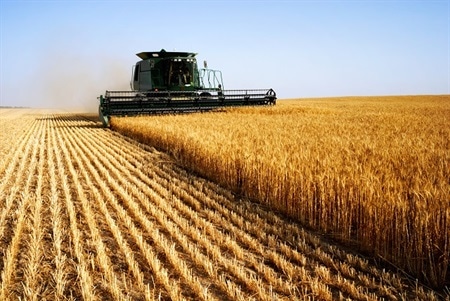Nano thecnology in agriculture and water resources management (PhD in Nano _ Microelectronics)
Researcher and author: Dr. ( Afshin Rashid)
Note: The pathway in which nanomaterials enter the environment and humans is through agriculture. Because many nanomaterials are widely used, large amounts of nanomaterials are expected to accumulate in sewage sludge in wastewater treatment plants. A significant portion of sludge is added to farms as fertilizer.
The small size of nanomaterials gives them unique properties that are different from their larger samples. For example, zinc oxide is more soluble, cerium oxide increases its antioxidant properties, silicon exhibits electrical conductivity, and gold undergoes a chemical reaction at the nanoscale. Such special features are exploited and adapted for a variety of applications that can lead to scientific discoveries, economic growth, job creation, improved human health, disease prevention / treatment, and environmental protection. Wider use of these substances increases their release into the environment through soil, climate, which may lead to unwanted pollution of terrestrial and aquatic ecosystems. Alternatively, nano-agriculture - the use of nanomaterials in agricultural practices - could pose a more serious and direct threat to environmental and human risks. Nano-equipped agriculture is particularly attractive because it offers more beneficial advances than farm mechanization and the Green Revolution.
Nano-formulations increase the efficiency of agricultural chemicals, improve transmission systems, absorb and absorb plant nutrients, and increase food quality with minimal impact on the environment. In fact, nano-agricultural inputs such as nano-pesticides and nano-fertilizers have been around for several years. Edible plants should be exposed to high levels of nanomaterials through direct targeted application of nano-usable agricultural inputs. Unfortunately, the difference between the potential benefits and harms of nanoproducts can be quite subtle, and there is a great deal of knowledge about the long-term effects of nanomaterials on the environment, crop production, and human health. Current knowledge highlights the contradictory effects of nanomaterials on plants, which is not surprising given the complex processes involved in plant nanomaterial interactions. For example, exposure of nanosyria (cerium oxide nanoparticles) to wheat and barley under similar soil and environmental conditions causes a tremendous increase in branch biomass in barley, but only minor changes in wheat. And nanowire is harmful to grain production in the atmosphere, but despite grain delays and wheat maturation, it improves grain yield. Nanomaterials pose unknown hazards to plant-related microorganisms, enzyme activity, and microbial compounds / processes in the soil, all of which may cause fundamental changes in soil health.
Conclusion :
The path through which nanomaterials enter the environment and humans is through agriculture. Because many nanomaterials are widely used, large amounts of nanomaterials are expected to accumulate in sewage sludge in wastewater treatment plants. A significant portion of sludge is added to farms as fertilizer.
Researcher and author: Dr. ( Afshin Rashid)
PhD in Nano-Microelectronics




